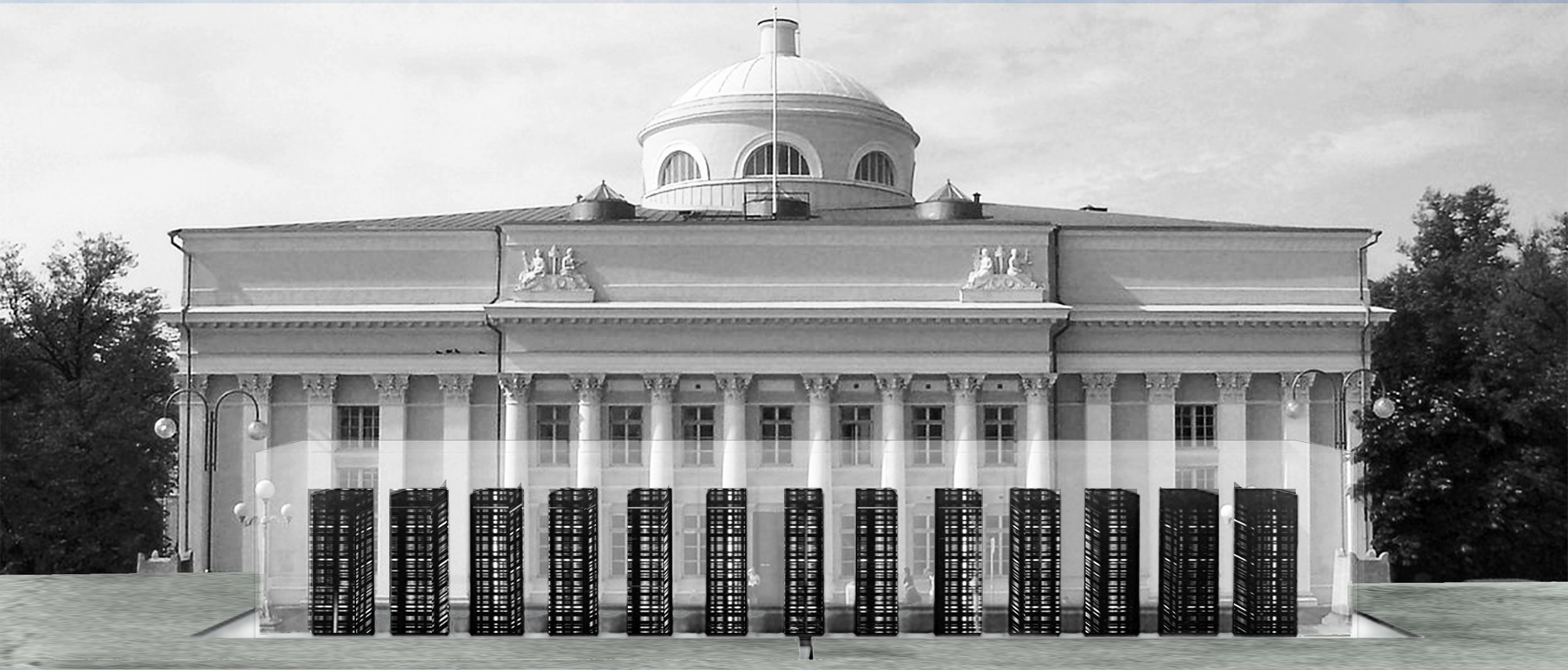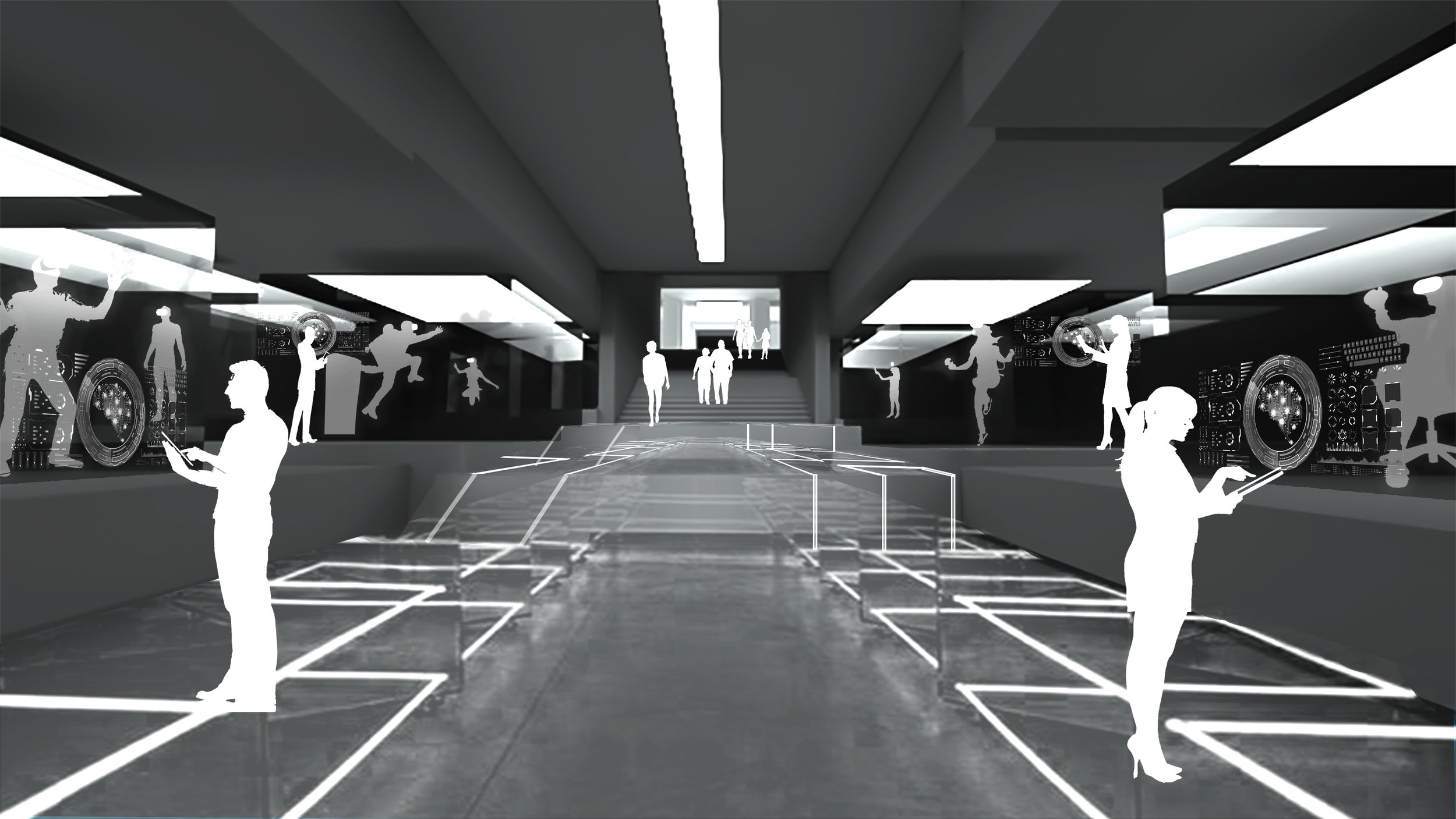
‘The Data Arch 2051’ by Tina Kazem Soltani
Master of Architecture (202192021)
KU Leuven - Faculteit Architectuur Campus Sint-Lucas Brussel
Key supervisors: Caroline Sohie, Alex Christodoulou
(Tracing the emerging footprints of societies from virtual to physical world)
Considering the increasing importance of data and connection in daily life and the growing demand for less latency and heavier data processes, the role of data centers as one of the main infrastructures of the 21st century, and their inclusion in the urban area can be foreseen. As the collective historical archive and information centers of the future, data centers will gain centrality in the urban context and be one of the most culturally significant typologies. (Rem Koolhaas, 2018)
The Cloud is the core of the Internet infrastructure, it is where data is stored and distributed, but this weightless insubstantial image refers to giant typologies of data centers, the home of the Internet. As our devices get thinner, data centers become bigger. Data centers are buildings where human scale and human conditions become irrelevant. They are machines, carefully engineered to the conditions required to secure the productivity of the system, with ‘usually’ no aesthetic agenda. They are less of an architectural response, rather a practically efficient industrial response to the need for data storage. Physically, they are highly disconnected, yet virtually they are deeply connected to human society. These highly secured and secluded machines are the underlying infrastructure layer that gathers and guards ‘data’; the 21st-century currency, knowledge, and power.
The virtual sphere of networks also has enormous environmental footprints on the ‘real world’. All the actions in the Online world combined, have the carbon footprint equivalent of the aviation industry. The electricity required to store and transfer these data packages measures for at least 1% of global electricity usage.
The notion of change in the age of the Internet is tied with data and information technology. This project proposes an alternative approach to locating the data center as a hybrid typology tied to the urban fabric. The hybrid of the data center, with “the known” and “the existing” in cities, can bring about new opportunities to address the rising challenges of the hyper-digital hyper-connected future world. Today, Libraries are the core collector and source of access to history and knowledge in cities. Tomorrow, data centers will play that role. The Data Arch is the hybrid of the data center and library, as the information center and the gateway to history and knowledge. This hybridity also brings about the moment to re-introduce the lost public spaces and urban typologies that are outmoded due to the digitalization of the future and invoke the probably forgotten human-to-human interaction in the future.
The Project is located in Helsinki, one of the most desirable locations for sustainable data centers as it has access to free air cooling, a stable social and political situation, good fiber optic and electricity, and most importantly, heat reuse infrastructure. The Data Arch is located in the developing underground city network of Helsinki which not only is responsive to possible future densification and environmental challenges but also provides the opportunity to explore the urban integration in the historical and central part of the city.
Data centers are the emerging cultural typology and infrastructure that flows, stores and protects information in the age of the Internet. The Data Arch is where the wave of the future (data center) and the wave of yesterday (library) expand their dimensions to merge, blend and re-frame.
Tina Kazem Soltani / Master of Architecture / KU Leuven, 2019-21
I obtained my bachelor of architecture from the University of Tehran and continued my education studying master of architecture at KU Leuven Campus Sint-Lucas Brussel. I had the opportunity to experience a six-month exchange program at the University of Stuttgart during the second year of my master's program.
Data, Internet, Data center, Library, Integration, Urban design, hybrid typology, knowledge, future, infrastructure






